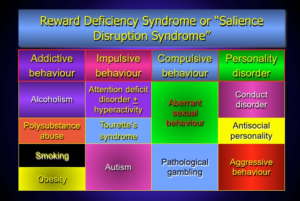Methamphetamine Use May Risk Development of Parkinson’s Disease
Methamphetamine Use May Predispose Consumers to Future Development of Parkinson’s Disease
There are several neurodegenerative disorders but it will still not be right for anybody to talk about neurodegenerative disorders without mentioning the Parkinson’s disease. This disorder is the second most common after Alzheimer’s disease and it is affecting approximately ten million people worldwide. The probability of a person suffering from this disease increases with age with most people being diagnosed after the age of 50. Early in the course of the disease, the most obvious symptoms are movement-related. These include shaking, rigidity, slowness of movement, and difficulty with walking and gait. However, the symptoms worsens as time passes by, these may include cognitive and behavioral problems with dementia commonly occurring in the advanced stages of the disease. Other symptoms include sensory, sleep, and emotional problems. PD is caused by degeneration of midbrain dopaminergic neurons that project to the striatum. The loss of striatal dopamine is responsible for the major symptoms of the disease. Although a small proportion of cases can be attributed to known genetic factors, most cases of PD are idiopathic. While the etiology of dopaminergic neuronal demise is mysterious, a combination of genetic susceptibilities, age, and environmental factors seems to play a critical role. Dopamine degeneration process in PD involves abnormal protein handling, oxidative stress, mitochondrial dysfunction, excitotoxicity, apoptotic processes, and microglial activation or neuroinflammation.

Studies on animals on methamphetamine toxicity
Studies done on animals have shown that methamphetamine can cause long-term dopamine terminal damage as well as dopamine neuronal body loss. In rodents, repeated administration of methamphetamine causes a decrease in dopaminergic markers such as tyrosine hydroxylase (TH) and dopamine transporter. Accompanied by a reduction in TH activity, reduced levels of dopamine and its metabolites and decreased levels of vesicular monoamine transporter 2 (VMAT2). These effects occur primarily in the striatum but also in the cortex, thalamus, hypothalamus and hippocampus. Methamphetamine induces neurotoxicity in a dose-dependent manner as do other amphetamine-derivatives like MDMA. Although partial recovery of TH and dopamine transport fibers occurs after methamphetamine administration, methamphetamine-induced neurotoxicity is persistent. In mice, the greatest dopaminergic fiber loss is seen 24 hours after methamphetamine administration. Neurotoxic effects persist for more than seven days after methamphetamine exposure and one month after MDMA exposure. Drugs that induce PD symptoms and TH loss such as MPTP in mice also show a partial recovery with time in nonhuman monkeys and mice. The time courses and degrees of TH and dopamine transport fiber recovery after methamphetamine or after MDMA exposure are similar, suggesting terminal regrowth, as these two proteins are independently regulated. Researchers have also noted that there is partial recovery of dopamine levels in the striatum strongly suggesting that the regrown terminals are functional. However the mechanisms responsible for partial recovery are not known, but it is speculated that it might involve compensatory sprouting and branching as has been reported for regrowth following MPTP-induced damage. Dopamine terminal recovery has also been described in rhesus monkeys and velvet monkeys, although it appears to occur on a slower timescale than in mice. Methamphetamine-induced dopaminergic damage persists for more than 12 weeks in velvet monkeys and more than 3 years in rhesus monkeys, demonstrating the persistence of methamphetamine-induced brain damage.
Methamphetamine Toxicity in the Substantia Nigra
This drug doesn’t only cause fiber loss in TH but also produces dopamine cell body loss in the substantia nigra as shown in tests in mice that were treated with 3 methamphetamine injections (5 mg/kg) at 3-hour intervals. From the counts it is evident that 20 to 25% dopaminergic cell loss, measured at different time are linked to exposure to methamphetamine. The observed pattern of TH-stained neuron loss is very similar to the pattern of Nissl-stained neuron loss, indicating that neuronal loss is specific to dopaminergic neurons. Dopamine cell body loss was confirmed via staining with Fluoro-Jade, a general marker of neuronal degeneration that fluoresces after administration of known dopaminergic toxins such as 6-OHDA and MPTP. Fluoro-Jade stains scattered neurons degenerated in the substantia nigra after methamphetamine treatment. there is a possibility that the lack of complete recovery of TH fibers in the striatum is related to the loss of dopaminergic neurons in the Substantia nigra similar to what occurs in Parkinson’s disease.

Increased Risk of Parkinson’s Disease in Methamphetamine Abusers
There are literatures that have linked the abuse of amphetamine to the later development of PD. In a report of a study done by Callaghan and his colleagues, there is an increase in of PD in methamphetamine users in an epidemiological investigation based on data from California statewide hospital discharge records. The researchers identified 1,863 methamphetamine users, 9,315 patients hospitalized for appendicitis as a nondrug control group, and 1,720 cocaine users as a drug control group. All subjects were aged at least 50 years, had been hospitalized in California between 1990 and 2000, and had been followed for up to 10 years after discharge. The methamphetamine user group showed an elevated incidence of PD, with a 165% higher risk for development of PD than the patients from the control group. the results have been confirmed by the same group after doing the same research but in a much broader scope; 40,000 people hospitalized for methamphetamine versus 200,000 for appendicitis and 35,000 for cocaine and a 16-year follow-up period. From these two studies it is evident that methamphetamine use increases the chances of PD development in adulthood.
Drug abuse, addiction and independence are problems that people grapple with every day. These problems need to be treated effectively through integrative medicine. Dr. Dalal Akoury (MD) is an expert at this. Call her on (843) 213-1480 for help.
Methamphetamine Use May Predispose Consumers to Future Development of Parkinson’s Disease


































